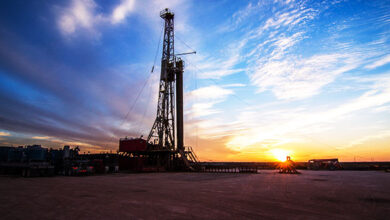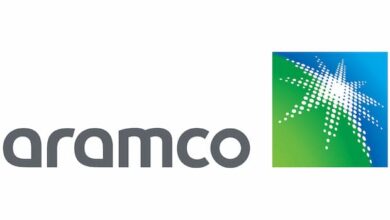At-bit steerable system enables single-trip vertical, curve and lateral drilling in North American shales
Case studies from DJ Basin and Marcellus demonstrate technology’s capability to improve lateral hole quality and ROP for high-DLS wells
By Gilles Vié, Schlumberger
E&P companies in North American shales face many challenges, including wells with high dogleg severity (DLS) that require high build rates, complex geological formations and wells with increasingly longer laterals. These technical challenges, combined with increased pressure from investors for more capital discipline, have set the stage to really think about how they can align today’s directional drilling (DD) services with their company’s development strategies.
With the increased downward pressure on both CAPEX and OPEX costs, these operators must find the optimal balance between the costs of DD service companies and the costs of rig contractors, while also taking into consideration the lateral length of their wells.
In 2016, the US Energy Information Administration (EIA) noted the average length of laterals in North American land wells was 7,000 ft (2,133.6 m). Today, that average is closer to 9,000 ft (2,743.2 m), with some operators drilling laterals in excess of 17,000 ft (5,181.6 m) in the Permian Basin – and even longer in plays such as the Marcellus Shale.
While the upfront costs for mud motors is lower than the upfront costs for a rotary steerable system (RSS), it often makes more economic sense to use an RSS for extended laterals because the reduction in drilling time starts to yield a reduction in rig contractor costs.
Another part of the equation that operators factor in when drilling extended lateral wells, in addition to the upfront costs, is tortuosity and the availability of gamma ray (GR) measurements. Such considerations have an influence not only on the operator’s operational efficiencies but also their ability to stay in the sweet spot of the reservoir and achieve more long-term well construction benefits.
RSS enables drilling some simple unconventional wells shoe to shoe in a single run, significantly reducing rig time and associated rig costs with pulling out of the hole (POOH) to reconfigure the bottomhole assembly (BHA).
One challenge with RSS BHAs, however, is they are not always capable of delivering the required DLS in the curves. This forces companies to use mud motors for the curves and then make an additional trip with an RSS – if that makes economic sense for the well – for the lateral section. This results in a lack of efficient steering technology in wells with high DLS, high build rates and extended laterals.
In addition to conventional RSS technologies, another option for drilling extended lateral wells is now available: the NeoSteer at-bit steerable system (ABSS) from Schlumberger. This represents a new DD category because it integrates the cutting structure with the steering system, providing high DLS capability and increased rate of penetration (ROP) in the curve and the lateral, while also providing optimal steering control to achieve straighter, higher-quality lateral sections.
In today’s high-volume market, where many operators are employing pad and batch drilling strategies, such a system opens a new range of drilling performance improvements.
A directional drilling innovation
Most of the BHAs deployed in extended lateral wells today leverage a conventional steering system and cutting structure, where the two components are separate. Because of this separation, on a conventional RSS BHA, the pushing mechanism of the steering system cannot be located as close as desired behind the bit. This conventional constraint in the distance between the RSS steering mechanism and the bit severely limits DLS capability and steering control in the curve and lateral sections of the well.
To overcome this limitation, the ABSS brings the cutting structure and steering system much closer together – within a matter of inches – merging these two components into one tool.
This, combined with digital integration with the control system, results in much more control in all sections of the well, even in wells with high DLS in the curves, low tortuosity requirements in the lateral and high ROP requirements from the shoe of the section to total depth (TD).
How they work
The new ABSS uses an actuating system to push against the borehole wall for propulsion; the pistons are placed next to the cutting structure for greater curvature leverage. The system uses this leverage to achieve higher build rates with no additional application of hydraulic force. This provides the ability to meet both the build requirements in the curve section and the directional control requirements in the lateral section.

The ABSS unit incorporates metal-to-metal hydraulic seals that reduce erosion and increase hydraulic design capability for improved performance. In addition, the steering technology can be equipped with extreme-profile single shoulder connections to increase reliability during high-DLS drilling. These connectors also enable compatibility with fit-for-basin PDC bits that are equipped with the proper 3D cutting elements for formation-specific challenges. Using these elements, the ABSS provides single-run drilling with greater drilling efficiency.
The system has the capability to take six-axis continuous inclination and azimuth measurements for precise well positioning. This, along with self-steering capabilities, helps provide smooth tangents with minimized tortuosity. Near-bit, extended-range GR measurements provide additional well positioning data for improved real-time decision making.
The ABSS can be configured with an onboard azimuthal image GR cartridge to improve in-zone percentage and enable steering within the reservoir sweet spot. With an azimuthal GR cartridge just 6 ft (2 m) behind the cutting structure, it can identify signs of changing lithology earlier than conventional BHAs, enabling instant steering corrections.
Improving hole quality
In the North American land market, lateral hole quality is an especially important consideration for operators.
First, the hole needs to be placed in the correct geological spot. Because the ABSS is equipped with an azimuthal GR measurement placed so near the cutting structure, the system provides a back-to-front contrast ratio of 24:1 to provide early and accurate geological information about the rock being drilled.

Second, geometry matters. After an aggressive curve is drilled to land the well horizontally, it is important to keep the tortuosity of the hole as low as possible. High tortuosity build-up in the laterals not only results in high friction and associated problems while drilling but may also cause challenges during completion operations.
Common challenges caused by elevated tortuosity include stuck drill pipe while POOH and difficulties running stiff completion tubing.
To maintain the lowest possible tortuosity, the ABSS has a full direction and inclination six-axis package (three accelerometers and three magnetometers) placed less than 10 ft (3 m) from the bit face. Made at high frequency, these measurements enable the ABSS to know immediately, in both time and distance, when the bit deviates from the intended plan.
Conventional RSS technologies lack some of these measurements, especially the azimuth, which makes it challenging to measure close to the bit with high accuracy in drilling conditions.
The ABSS is also capable of automatically, immediately and autonomously adjusting its steering settings, without the need to downlink any command from surface, to correct any deviation from the intended plan. Only this automated closed-loop drilling mode enables the lowest possible tortuosity in long laterals.
Because of the unique mechanical and digital designs of the ABSS, operators have much more control in all the sections of the well. This results in better contact with reservoir and a smoother hole, enabling more efficient completions designs.
Case studies
Since being introduced to the market, the ABSS technology has been used to drill a combined total of more than 4 million ft (1.2 million m) during more than 500 runs across multiple unconventional reservoirs in North America.
The fastest well was in the Denver-Julesberg (DJ) Basin and drilled shoe to shoe, through the vertical, curve and lateral, totaling 15,123 ft (4,609.5 m) in 29 on-bottom hours with an average ROP of 523 ft/hr (159.4 m/hr).
In the Marcellus Shale, an operator wanted to improve operational efficiency and well quality in drilling a long tangent section, a high-DLS curve section and a long 8,682-ft (2,646.3-m) lateral. The operator was going to use two BHAs due to the high performance required to successfully drill these sections according to plan. However, this well had the largest step-out on the pad and required kicking off at 56° inclination for 3,160 ft (963.2 m) and drilling through abrasive sandstone.
The ABSS, equipped with a ridged diamond element bit and accelerated drilling service, drilled 13,819-ft (4,212-m) measured depth (MD) through all three sections in one run. It also reduced the tortuosity of the complex well trajectory while staying 91% in a 4-ft (1.2-m) zone, compared with most wells with a 10- to 20-ft (3- to 6-m) window. This percentage includes the distance at the heel where the wellbore was soft landed.
Through the drilling process, azimuthal image and dip picking helped the wellbore stay in zone through formation changes.
Another operator in the Marcellus Shale wanted to save time and cut costs by attaining a single-run solution for curves and laterals. They also needed to maintain a high ROP throughout the curve and the lateral.
Prior to using the ABSS, the operator had been tripping out of hole to change BHAs after completing the curve sections. This was done to improve azimuthal control and consistency while drilling long lateral wells and to ensure a smooth wellbore for running casing and wireline operations during frac jobs.
Using the ABSS, equipped with a hyperbolic diamond element bit, both the curve and lateral sections were drilled 100% in zone in a single run with an average ROP of 308 ft/hr (93.9 m/hr): 126 ft/hr (38.4 m/hr) in the curve and 460 ft/hr (140.2 m/hr) in the lateral. The instantaneous ROP reached up to 700 ft/hr (213.4 m/hr) in some instances.
The ABSS helped drill over 8,114-ft (2,473.1-m) MD in a single day and reached TD in two days. It also delivered a tortuosity average of 0.55°/100 ft.
In the DJ Basin, an operator needed to drill the vertical, curve and lateral sections in a single run as quickly and at the highest quality as possible. The operator used the ABSS to drill a 12-well pad targeting vertical curves and lateral sections in a single run. This increased ROP by 20%, saving as much as 21 hours in a single well while targeting various zones in the unconventional Niobrara shale formation.
Conclusion
The DD industry has evolved over the past 60 years, enabling shale operators to drill the very complex oilfield wells trajectory we drill today thanks to key technology innovations. Sixty years ago, the mud motor was the first of these innovations.
Before the 2000s, the RSS brought a second key innovation that pushed drilling performance to new levels. Today, the new at-bit steerable system brings a third key technology innovation to the industry, which serves shale operators today and will address many more oilfield challenges in the future. DC
NeoSteer is a mark of Schlumberger.




